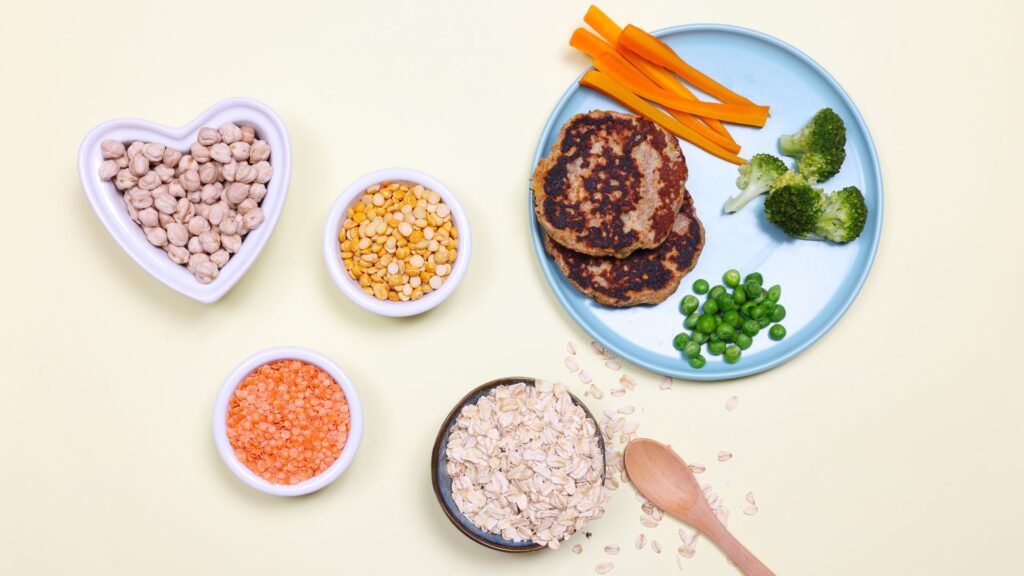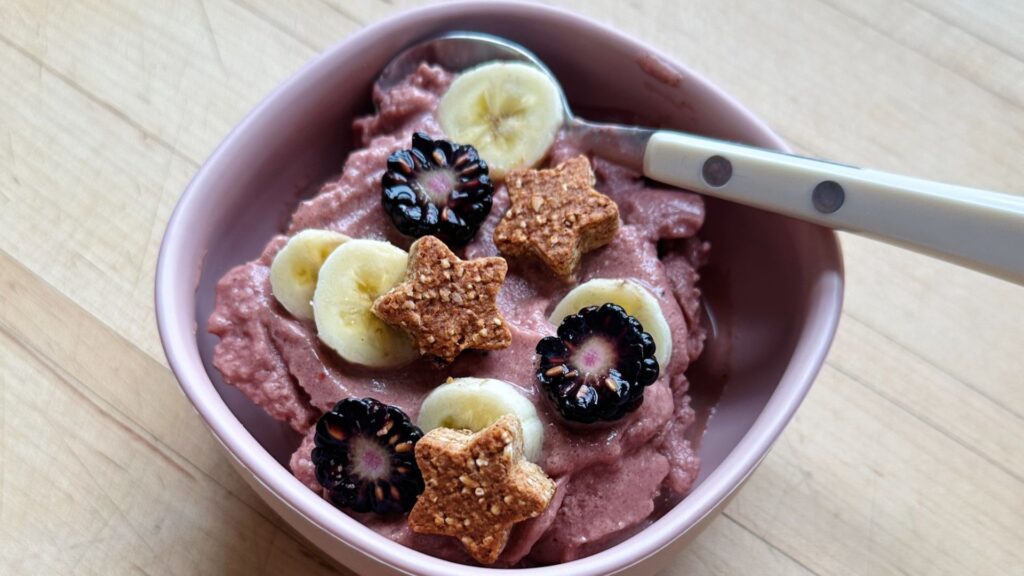How to Introduce Your Baby to Food Textures Along with Purees
*Disclaimer: this article is not meant to be individual medical/nutrition advice but for education purposes only. Each child’s nutritional needs are different.
Babies are as uniquely individual as adults. Learning to eat food is a journey that will be different for each little one.* Two things you can count on are that they will surprise you at every turn, AND they will love you no matter what.
Speaking as a (very lucky) mom first and a pediatric dietitian second, I LOVED spoon feeding my babies. When they opened their little mouth eagerly or needed a little touch to the lower lip with the spoon, it felt so satisfying. But this stage is fleeting and for developmental reasons I knew I needed to offer different textures and finger foods.
As I mentioned above, each baby is different, and each will be capable of eating different textures at a different pace. From my professional experience working with many families, rules stress parents out. So, no rules here.
*I work daily with parents who are not able to feed their children by mouth or have a medical need for a specific texture of food, for various reasons. Please know that I am sensitive to this and am very much aware that discussing typical oral feeding may be triggering or difficult for some parents to read. If this is the case for you, I hope you will find some inspiration or ideas within this article to help with food textures that are safe for your little one. Please consult your health care provider if you are not sure what consistency of food is appropriate for your little one.
This article will help you with introducing your baby to food textures along with purees

How do I know which texture to offer to my baby and when?
“It’s always best that you start at the beginning”. — said Glinda the Good Witch of the North, who I trust implicitly.
Let’s think of the beginning as thin liquid (aka breastmilk or formula). From there, around 4-6 months of age, you can gradually add in purees, then introduce minced (almost smooth), followed by chunkier textures so they can get used to the feel of non-uniform food.
Simultaneously, while you are spoon feeding, you can also put safe finger foods on their tray. At first these finger foods will likely be for exploration and exposure. Remember, introducing textures is developmentally important, but so is nutrition. I often find parents tell me that spoon feeding nutrient dense foods is how they know their kiddo is getting what they need –- and finger foods are for learning. At least in the first few months.
Since they can’t yet verbally tell us how they feel about the food we put in front of them, it’s super important to watch their non-verbal cues and reactions. Some babies may not enjoy the chunkier foods mixed into purees, they may prefer smooth purees AND finger foods on the side. Stay flexible and let them see you enjoy food along with them.

Inspired ideas for adding texture and variety to veggie-first baby food purees
Minced (almost smooth) texture Nutrient added value
|
Minced beef, chicken, lamb. Start with pureeing meat in food processor with quite a bit of fluid to make it smooth. Once they’ve mastered the smooth texture, gradually make ‘finely ground’ by adding a little less fluid and ‘pulse’ the food processor instead of letting it puree. |
Iron, protein, vitamin B12 |
|
Minced or mashed salmon |
Omega 3 DHA, protein, zinc |
|
Cooked, mashed red lentils or green peas |
Protein, iron |
|
Add beaten egg, stirring constantly into warmed veggie purees (do not boil), until egg is cooked. Try using Cerebelly Pea Basil! |
Choline, fat, protein |
|
Ricotta cheese |
Protein, calcium |
|
Peeled, grated fruit, like apple or pear. Try mashing the grated fruit with potato masher, but also offering the grated fruit on the side. |
Fiber, vitamin C |
|
Mashed soft fruit, like peaches, plums, bananas or apricots. |
Vitamin C, fiber, potassium |
|
Cooked quinoa |
Fiber, magnesium, zinc |
|
Sprinkle ground flaxseed |
Omega 3 ALA, fiber |
|
Cooked oatmeal, pureed in food processor |
Fiber, B vitamins, prebiotics |
Lumpy texture Nutrient added value
|
Cooked, chopped tofu |
Calcium, protein |
|
Cottage cheese |
Calcium, protein |
|
Soft, chopped pasta |
Carbohydrates, fiber |
|
Chunks of soft avocado |
Monounsaturated fat |
|
Grated firm cheese, like cheddar. Diced soft cheese, like pasteurized fresh mozzarella. |
Calcium, vitamin B12, protein |
|
Cooked, chopped fruit or soft vegetables, or mashed/cut berries. |
Variety of vitamins and minerals |
|
Chopped or finely shredded chicken or turkey |
Iron, protein, vitamin B12, zinc |
|
Chunks of salmon |
Omega 3 DHA |
|
Well cooked, soft barley or buckwheat |
B vitamins, fiber, copper |
|
Cooked oatmeal |
Fiber, B vitamins, prebiotics |

Key Takeaways
- Offer nutrient dense foods so that every bite counts.
- Gradually offer different textures.
- Try mixing textured food into veggie-first nutrient dense purees. Use a spoon to get food ‘in’ (for nutrition).
- Let your little one show you what texture they can handle. Watch their reaction and trust them.
- Let them play with their food, even though it’s messy. For easy clean up, put a towel or mat under their highchair.
- Don’t be surprised if they skip a ‘stage’ that you felt they ‘should’ be at. Likewise, don’t be surprised if they only want one type of texture for a long time.
About
the author
Stacey Segal BScA, MSc, RD

Stacey is a pediatric dietitian and a mom of two little eaters. Her career has been dedicated to nourishing babies, toddlers and kids. She’s a staff dietitian at The Hospital for Sick Children, Toronto, specializing in neuroscience. Stacey is also the founder of the Prenatal and Pediatric Nutrition Clinic at GSH Medical, and a nutrition writer for AboutKidsHealth website. Being a mom herself, she has experienced the challenges that come with feeding kids. She’s passionate about helping families raise well nourished kids right from the start!
Have more questions? Send us an email at support@cerebelly.com and we will be sure to get back to you!



